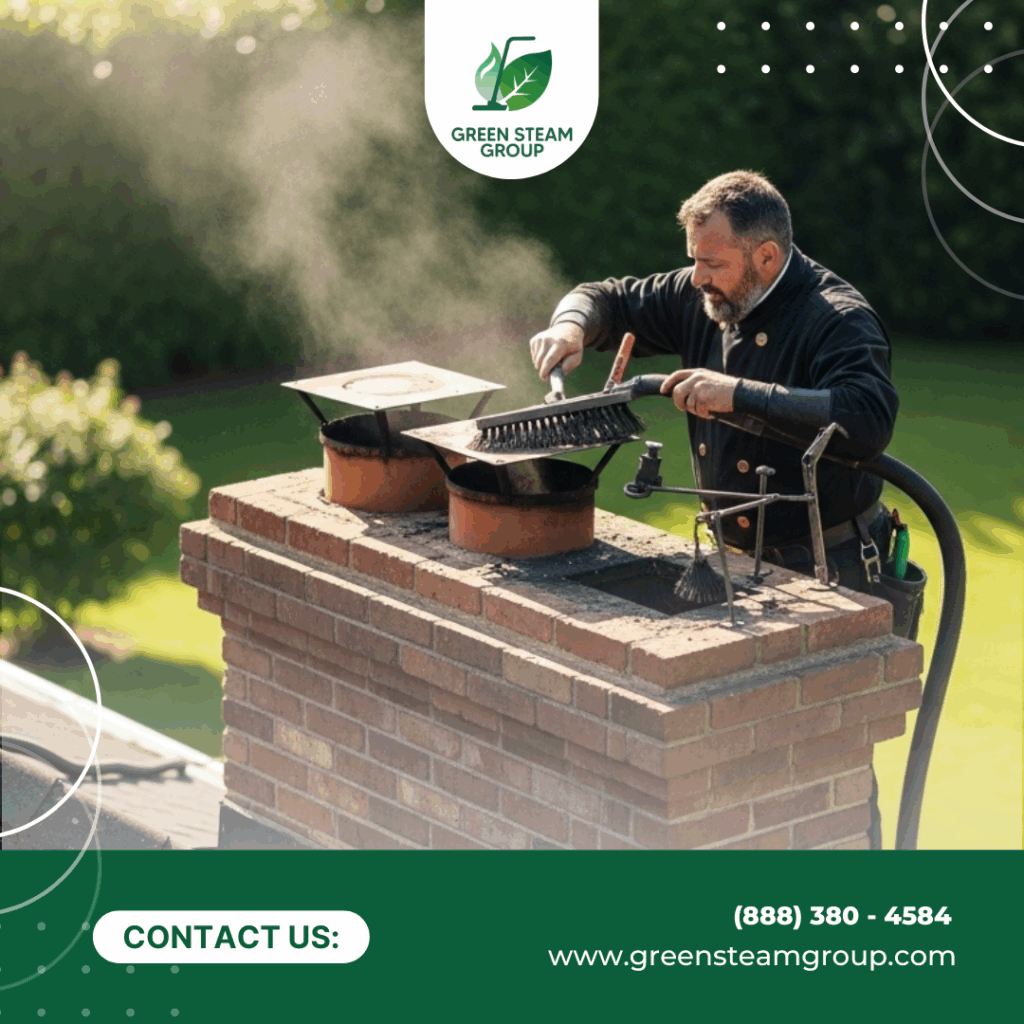A cozy fire can be one of life’s simple pleasures—providing warmth, ambiance, and comfort during the colder months. But behind the glow of the flames, a dirty or neglected chimney can become a serious safety hazard. Every year, thousands of homes are damaged or destroyed due to chimney fires that could have been prevented. The good news? Regular chimney cleaning is one of the most effective ways to protect your home and loved ones.
In this article, we’ll explore the dangers of chimney fires, how chimney cleaning helps prevent them, and what every homeowner should know to stay safe and warm all winter long.
What Causes Chimney Fires?
Chimney fires start when a flammable substance called creosote ignites inside the chimney flue. Creosote is a sticky, tar-like substance that forms when wood smoke cools and condenses as it travels up the chimney. As it accumulates layer by layer, it becomes increasingly flammable.
Chimney fires can be explosive and obvious—or slow-burning and hidden. Even a minor fire can crack tiles, damage chimney liners, and ignite nearby building materials.
Common Causes of Creosote Buildup:
- Burning unseasoned or wet wood
- Infrequent chimney cleaning
- Poor air circulation or draft
- Oversized or inefficient stoves
- Cold chimney temperatures
The longer creosote is left to accumulate, the greater the fire risk.
Warning Signs of a Chimney Fire
While some chimney fires produce loud cracking sounds and visible flames, others go unnoticed until damage becomes severe. Here are some signs that a chimney fire may have occurred:
- Loud popping or rumbling noises
- Dense smoke pouring into the home
- Flames shooting from the chimney top
- A strong, hot smell coming from the fireplace
- Cracked or damaged flue tiles
- Warped metal or melted components in the chimney
If you suspect a chimney fire has occurred, stop using the fireplace and contact a professional immediately for an inspection.
How Chimney Cleaning Prevents Fires
The best way to stop chimney fires before they start is with professional chimney cleaning. Removing soot, ash, and creosote buildup drastically reduces the chance of ignition and ensures your fireplace runs efficiently.
Here’s how chimney cleaning protects your home:
- Removes flammable creosote and soot
- Clears blockages that can restrict airflow
- Identifies early signs of damage or wear
- Improves smoke ventilation and fireplace performance
- Ensures your chimney complies with safety standards
Routine cleaning allows your chimney to vent properly and helps prevent dangerous pressure or heat buildup.
Our Chimney Cleaning Process
We provide thorough chimney cleaning services that go beyond the basics. Our step-by-step process is designed for maximum safety, cleanliness, and peace of mind:
Step 1: Chimney Inspection
We assess your chimney’s condition, flue lining, and creosote levels to determine the best approach.
Step 2: Setup and Protection
We use protective tarps and vacuums to prevent messes and keep your home clean during the process.
Step 3: Creosote and Soot Removal
Using professional-grade brushes and rotary tools, we clean the entire flue, smoke chamber, and firebox.
Step 4: Draft and Safety Testing
We check for airflow, structural damage, and any signs of past chimney fires or blockages.
Step 5: Final Report and Recommendations
We’ll share what we found, including any necessary repairs or next steps to maintain a safe chimney.
How Often Should Chimneys Be Cleaned?
The National Fire Protection Association (NFPA) recommends having your chimney inspected at least once a year and cleaned as needed. More frequent cleaning may be necessary if you:
- Use your fireplace regularly
- Burn softwoods (pine, fir, etc.) or unseasoned wood
- Notice strong odors or poor draft
- See visible soot or creosote buildup
- Just moved into a new home with a fireplace
Don’t wait for a problem to arise. Preventative cleaning is far easier—and less costly—than fire damage repair.
Additional Tips to Prevent Chimney Fires
Alongside annual cleaning, follow these safety tips to reduce the risk of chimney fires:
- Only burn dry, seasoned hardwood
- Never burn trash, cardboard, or treated wood
- Keep flammable items away from the fireplace
- Install a chimney cap to prevent debris and animals
- Use a fireplace screen to contain sparks
- Ensure your smoke detectors and carbon monoxide alarms work properly
These small steps, paired with regular chimney cleaning, will keep your home safe and your fireplace operating smoothly.
Final Thoughts: Fireplaces Should Bring Comfort—Not Danger
A warm fire is one of the most relaxing parts of home life—but only if it’s safe. If it’s been more than a year since your last chimney cleaning, or if you’re noticing signs of creosote buildup, don’t take chances. A quick cleaning today could prevent a devastating chimney fire tomorrow.
Contact us now to schedule your chimney cleaning service and enjoy the season with peace of mind, knowing your fireplace is safe, efficient, and ready to use.
READ MORE:

